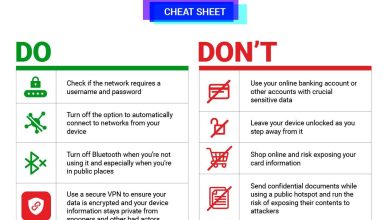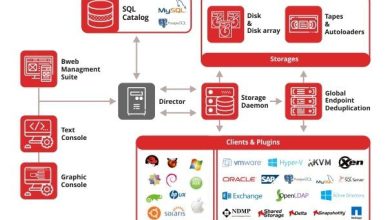Key Metrics to Monitor in Your Backup and Recovery Processes

Key Metrics to Monitor in Your Backup and Recovery Processes
In today’s digital age, protecting your data is paramount. Every association depends on its data for operational functionality, customer engagement, and critical decision-making processes. Therefore, having robust backup and recovery processes is not just an option but a necessity. To ensure that your backup solutions are effective, it’s vital to monitor specific metrics. In this article, we will explore teh key metrics that you should keep an eye on to improve your backup and recovery processes, ensuring your data remains safe and easily recoverable.
Why Monitoring Backup and recovery Metrics is Critically important
Understanding the meaning of monitoring backup and recovery metrics is essential for any organization.Here are a few reasons why:
- Data Integrity: Continuous monitoring helps maintain the accuracy of data during backups.
- Operational Efficiency: Identifying bottlenecks can enhance operational workflows and recovery times.
- Minimizing Downtime: Rapid recovery minimizes downtime, allowing your business to function smoothly.
- Cost Management: Effective monitoring can definitely help manage storage costs and operational expenses.
Key Metrics to Monitor
1. Recovery Time Objective (RTO)
The Recovery Time Objective (RTO) is the maximum acceptable amount of time that a system can be down after a failure. This metric helps organizations plan their recovery processes effectively.
Why Monitor RTO?
- Helps define recovery strategies and resources needed.
- Ensures business continuity and operational stability.
2. Recovery Point Objective (RPO)
The Recovery Point objective (RPO) determines the maximum period in which data might be lost due to the incident. It is crucial to understand how frequently backups must occur to meet your organization’s data protection needs.
Benefits of RPO Monitoring
- Defines data backup frequency to keep data loss to a minimum.
- Helps in choosing appropriate backup solutions.
3. Backup Success Rate
This metric provides insight into the percentage of prosperous backups compared to the total number of attempts. A high backup success rate indicates reliability in your backup processes.
Tips for Improving Backup Success Rate
- Regularly test backup restores.
- update backup configurations as needed.
4. Data Integrity Checks
Data integrity checks are measures taken to ensure that data remains accurate and consistent during backup and recovery. monitoring data integrity helps identify errors or corruption within the backup.
Importance of Data Integrity
- Ensures reliability and accuracy of restored data.
- Reduces chances of data corruption.
5. Storage Consumption
Monitoring storage consumption helps you manage space effectively. Understanding how much storage your backups consume helps prevent unexpected costs.
Managing Storage Effectively
- Regularly audit backup data to remove outdated or unneeded files.
- Leverage deduplication techniques to save space.
6. Backup Duration
Backup duration measures the total time taken to complete a backup operation. A prolonged backup duration could indicate potential issues within your backup procedure.
Improving Backup Duration
- Optimize backup schedules during off-peak hours.
- Use incremental backups to reduce duration.
Case studies: Metrics in Action
case Study 1: A Financial Institution
A leading financial institution adopted a thorough backup monitoring strategy. By focusing on RTO and RPO, they achieved a 90% reduction in downtime during recovery incidents.
Case Study 2: An E-commerce Company
an e-commerce platform improved its backup success rate from 75% to 99% by introducing proactive monitoring.regular integrity checks helped them maintain data consistency, which was critical for their operations.
Practical Tips for Effective Monitoring
- Regular Reporting: Create weekly or monthly reports to track key metrics over time.
- Automation: utilize automated tools to monitor backup metrics instead of relying solely on manual inputs.
- Training: Regularly train staff on the importance of backup monitoring and management tools.
First-hand Experience: Lessons Learned
From organizations that have meticulously monitored their backup and recovery processes, some common lessons learned include:
- Proactive monitoring can avert data loss crises.
- Regular reviews of backup practices are essential to adapt to changing business needs.
Conclusion
Monitoring key metrics in your backup and recovery processes is not just about protecting data; it’s about ensuring operational efficiency and continuity in today’s data-driven world. By focusing on metrics such as RTO, RPO, backup success rates, and data integrity, organizations can build robust systems to safeguard against data loss, minimize downtime, and enhance overall data management strategies. Implement thes practices today to foster a more secure and resilient organizational infrastructure.




